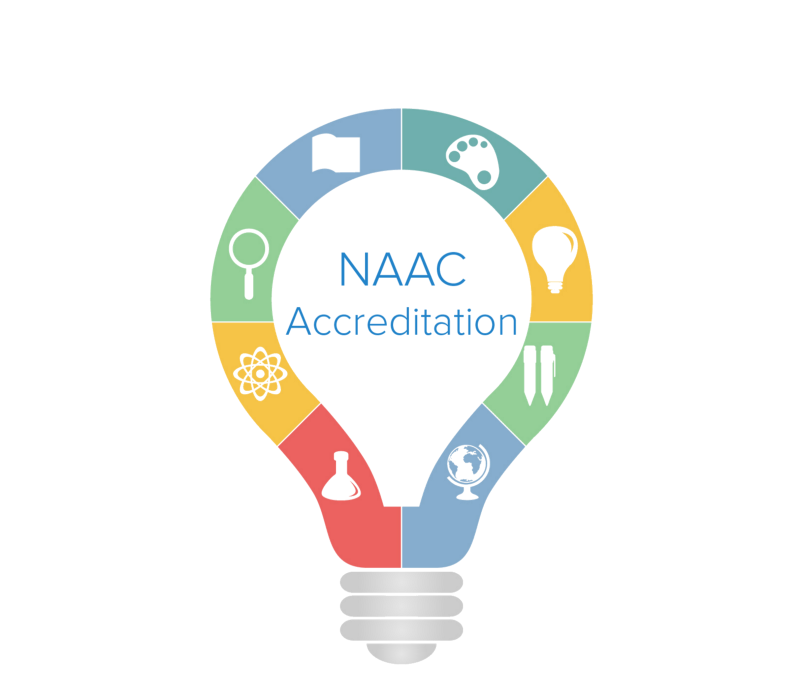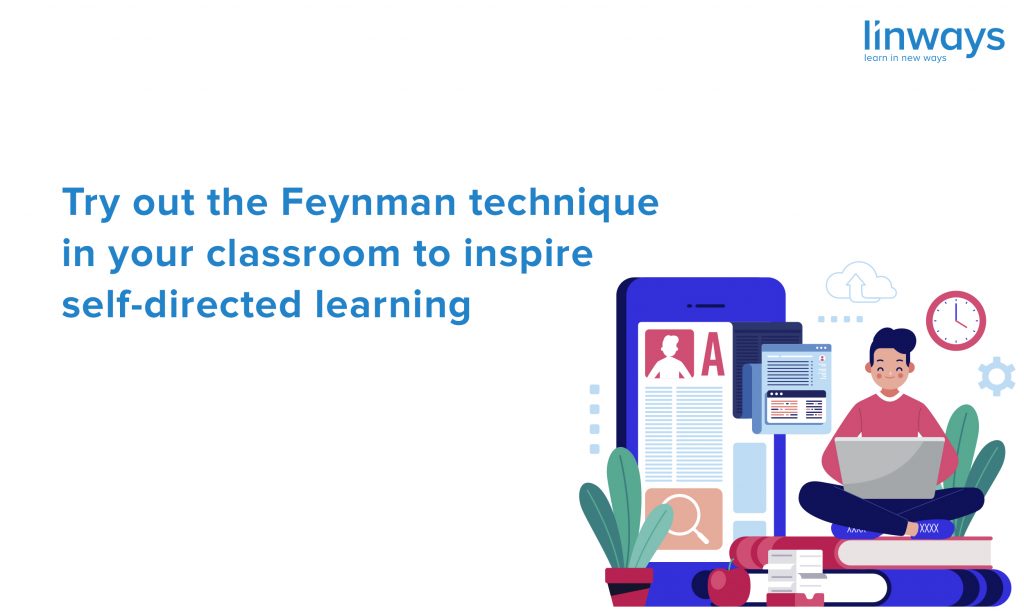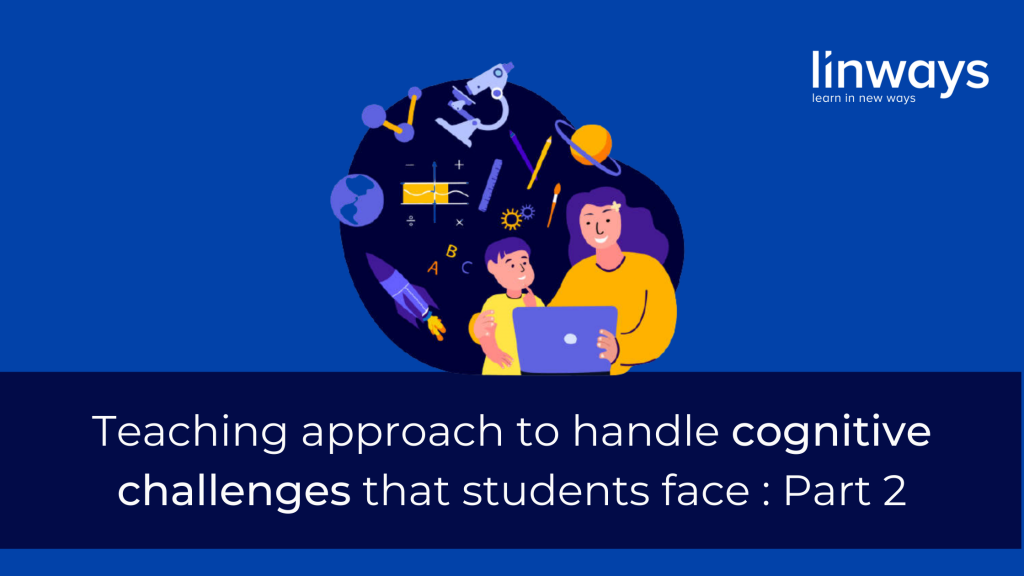The effectiveness of professional development depends on how carefully educators conceive, plan and implement it. – Hayes Mizell, Why Professional Development Matters Learning Forward, 2010
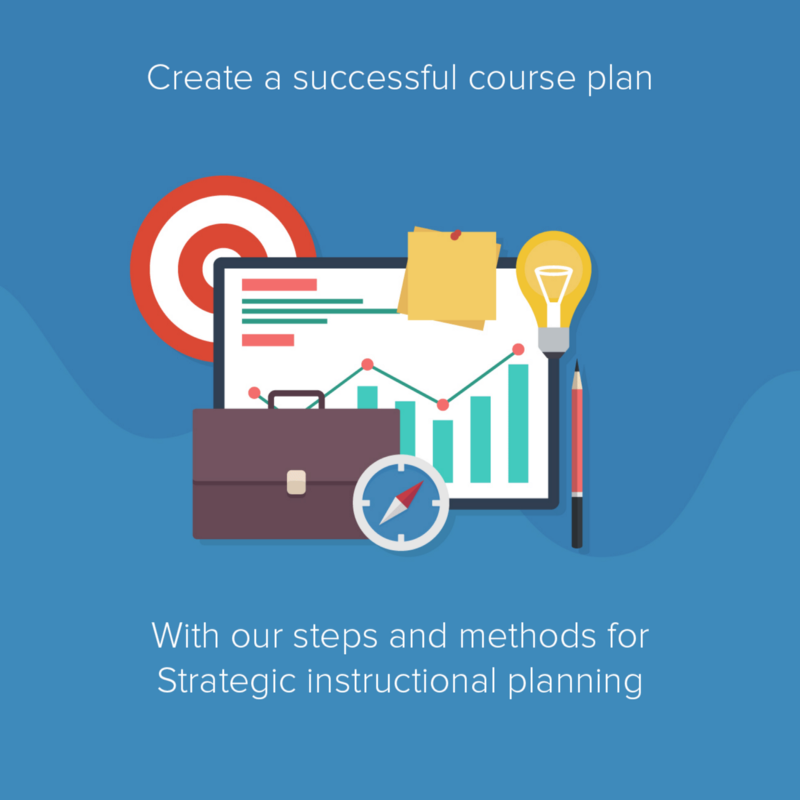
Planning is important. No matter if it’s for your classroom, going to a supermarket, or buying a car. In education, a well-worked out course/lesson plan will act as a core of teaching-learning process. It answers all the necessary questions and provides sufficient support to the teacher so that the teaching becomes smooth and easy.
It may be the state/university/institution that decides what the students should learn but it falls to the teacher how the curriculum is taught, structured and how the students learn.
Instructional planning happens when a teacher is able to visualise and forecast the future of what, why, and how of the teaching-learning process.
Why is planning so important
Planning is a roadmap to the instructor’s success.
Whenever you make a plan, you know what you want to achieve. At the same time, it becomes clear what the future might hold and what your goals are. Your goals, which has been decided by planning, makes your decision making more efficient and more ‘to the point’.
This is because you know that how a decision will affect your plan in the long term and whether or not, this decision will help you in achieving your goals. Thus it helps you make decisions faster.
Planning takes a lot of time and effort. It’s easy to procrastinate or to tag it unnecessary. But once you realise the time and energy you save with proper planning, there’s no way you can unsee it. Something so simple as creating a lesson plan can be this transformational event which instantly takes your teaching to the next level.
A lot have been spoken about the importance of planning. So we are not getting into one of those long lectures where we go on and on about why planning is a crucial element in teaching-learning process.
If you want, you could check out these resources regarding the importance of planning. Importance of planning, Planning and Organizing for Instruction.
How to plan for classrooms
A successful lesson plan addresses and integrates these three key components :
- Objectives for student learning
- Teaching/learning activities
- Strategies to check student understanding
Here’s a bunch of questions to help you better prepare for the classroom. Try to answer them before you put your plan into action.
- How will you check whether students know anything about the topic or have any preconceived notions about it?
- What are some commonly held ideas (or misconceptions) about this topic the students might have?
- How are you going to introduce the topic?
The 3 Stages of lesson planning
- Outlining stage
Creating an overview of the curriculum, desirable outcomes, learning objectives etc. Structuring the timeline for the plan. Gathering data and teaching/course materials. - Decision stage
Decision stage is where you create your plan, and decide on what and how you are going to execute your plan. Workflow of step by step implementation, delivery methods, assessment techniques, backup options, etc. comes under this section. - Mapping stage
Map the things which you have decided on with the things you want to achieve. See if they align. If not, try to rethink your decision.
A few steps to walk you through the process
Planning usually takes a lot of time and work from your side. But it can be intimidating to begin from scratch. So to help you get a better hold on things, we have listed a few techniques and methods teachers usually use to create a successful course plan.
Step 1. Create an outline of the curriculum you want to cover
This is basically how you begin. Learn about what you are going to teach and how deep your subjects are. This will give you an overall idea about how big your task is.
Step 2. Create a list of desired outcomes
Of course you can’t create a plan without targets. Desired outcomes and objective are your targets. Also, Outcome Based Education (OBE) is the buzzword these days. Every university and education board are moving more and more towards OBE. So creating a list of desired outcomes and objectives might help you align with the objectives of your university/board.
While deciding the outcomes, keep these questions in your mind.
- What is the topic of the lesson?
- What do I want students to learn?
- What do I want them to understand and be able to do at the end of class?
- What do I want them to take away from this particular lesson?
- Step 3. Make another outline of the time — year/semester.
Having an idea about the time frame can help you plan better. The effectiveness of your plan depends on intelligently distributing the curriculum across the year/semester. - Step 4. Break curriculum down into small manageable pieces
This could improve your productivity. Small tasks would seem easy job and will get you through doing a lot more than within short time. This could keep you from procrastinating and help you maintain a better control over the curriculum. - Step 5. Take time to decide which takes what time
Analyse the importance of each modules and decide how much hours you want to spend on each topics. Also decide which parts can be skipped or omitted if you are pressed by time. And conversely, which topics you can expand on if things moved faster than expected. You can have a better authority over the time if you know how much time you need beforehand. - Step 6. Spread them across the timeline
Spread the curriculum across the timeline accordingly. This one is totally your call and you shall decide how much you are going to cover within a given period of time. You could also collaborate with other faculties to have better inputs and fresh perspectives. - Step 7. Gather teaching materials and supporting data
Besides the usual teaching materials, planning gives you time to gather enough data and resources to support your teaching. You could make use of books and documents from outside the curriculum and new technologies to assist your instruction. Techniques like flipped learning and making use of technologies like Academic Management Systems can help you here. - Step 8. Decide on how you are going to share course materials with students
The interactions you have with your students are really important. You could save a lot of time and optimise the efficiency by implementing ICT enabled education to share course materials and other important documents. And like we mentioned before, Academic Management Systems can be of great help to you. - Step 9. Decide how you are going to assess students , exams, assignments, projects, tasks etc.
Deciding the assessment mechanisms and evaluations beforehand can be of great help. The way you assess will have an overall impact on the teaching, and it gives you valuable insights on the course progress. But to be prepared and to be able to effectively map your outcomes to the curriculum, you might need to focus on the evaluation techniques even before you begin the semester.
How to assess your plan
Nobody gets it right for the first time, or the second time. So have techniques and measurement metrics to assess your plan. Here are some of the proven techniques and metrics to keep in close watch if you want to know the effectiveness of your plan.
- Student results
Of course the most evident of outcomes. The results of your students and their performance gives you solid feedback on how well your plan works, and how effective it is. You could reflect on it and resort to making improvements and improvisations in your plan. - See whether if it provides any insights
Your plan should ultimately provide some insights to you. It should help you realise your time management skills, teaching skills, and valid information about the curriculum. - Contributions into the teaching learning process
The plan should also contribute to the curriculum and the teaching-learning process. It should help all the stakeholders keep a better track of the course and help them take more informed decision at the right time. Having a well-worked plan could seriously improve how you, and your students perceive the curriculum. It gets things organised and accessible. - Check for productivity
See if your course plan helps you increase you productivity. Obviously the lesson plan can help you tackle problems more effectively. It keeps you informed which saves time and energy. This way, your plan could tap into your productivity potential which you didn’t even know existed. You will be better equipped to complete tasks and evaluate outcomes faster. - How this plan helps the students
While planning, take time to assess how it helps your students. A good lesson plan should contribute into the results and productivity of your students too. A plan should benefit your students and keep them on track. Discussing the whereabouts of the plan with your students will give them a clear picture of what to achieve and expect. This could have a positive impact in the classroom and the desired outcomes. - Gathering feedback
Along the way till the end, you must gather feedback from the stakeholder and measurable metrics. Continuous evaluation and gathering feedback is one of the most important aspects of Outcome Based Education (OBE). Feedback is the easiest way to know if your plan is working or not. Your plan should be considered flawed if it does not give room for feedback.
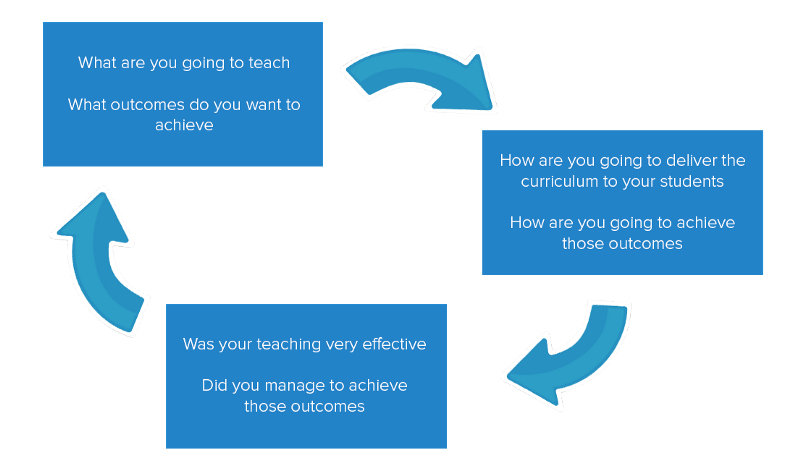
- Improvising plans on the way
The mark of a great teacher is the ability to infer what their students need. The education should ultimately be student centric. Along the curriculum till the end, a teacher must consistently take feedback and perform course-correction in their plan. No matter how good your plan is, there can always be room for unexpected twists and turns in your way.
Be that if the results of your pupils way lower than you expected, or if the time allocated for a module was cut short by some extracurricular activities; all kinds of things can go wrong. So the best thing you can do is to be prepared, and be ready to improvise the plan if needed. Continuous evaluation and keeping a close watch on your goals can help you take the right decisions at the right time.
Of course having an efficient Academic Management System like Linways in your institution helps you plan, implement, share, and monitor the effectiveness and achievement of your course plan. So you could also consider the possibilities of incorporating such innovative technologies in your institution.
If you have managed to get this far, here’s out list of techniques and steps involved in successful lesson planning.
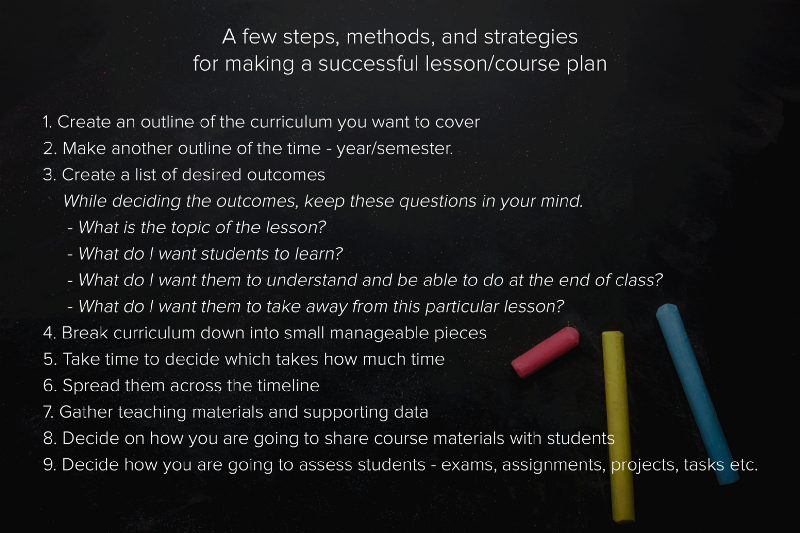
Subscribe for more updates and teaching-learning resources from Linways.


